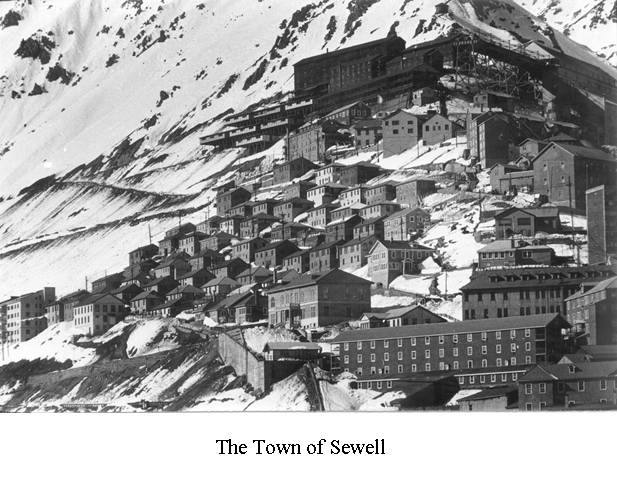

SEWELL, A MINING TOWN AND WORLD HERITAGE SITE
By Diana Kennedy
This article was originally published in the December 2011 edition of Soul Search, the journal of The Sole Society
The mining town of Sewell is located on the slopes of the Andes on Cerro Negro at an altitude of between 2,000 and 2,500 metres. It is 50 miles south of Santiago and 26 miles up the mountain from Rancagua. First called El Teniente, the town was once an isolated copper mine but is now an uninhabited historical site and is a UNESCO World Heritage Site. It has been recognised as a great cultural and architectural work, a unique mountain community that defied the elements and the difficulties to prosper: the only one like it in Chile.
Copper deposits were known to exist at el Teniente from the 15th century when raw materials were exported by the Spanish. In 1897 the owner of the mining rights initiated a survey of the copper seams and discovered a huge potential for extracting copper which would require great investment. An approach was made in 1903 to the North American mining engineer William Braden. Braden arrived in Chile in 1904 and began acquiring the property. Together with E W Nash, president of the American Smelting Company and Barton Sewell, the founder and Vice-President they created the Braden Copper Company in 1904. In 1905 they bought the Chilean copper mine. In 1915 the town was re-named Sewell after Barton Sewell the company’s first president.
Over the next two years the infrastructure was developed and machinery was imported from the United States. By 1906 the first mill and concentrator had been erected, a lift and electricity generator installed. The installations were cutting edge technology of the day to be used in an extremely remote and hostile environment. Mining was officially authorised to begin in 1905. A narrow gauge railroad line between Sewell and Rancagua was started in 1907 and was in full use by 1911.
The operation base and administrative headquarters were located at Rancagua which rapidly developed into a town. A new town was developed at Sewell where the mine was located. Electricity was generated at Coya and the huge buckets of the copper ore snaked down the hill to the smelted works at Caletones.

By 1918 the Sewell mining camp housed 14,000 people. By the early 1960s it had a population of 16,000, men, women and children of many nationalities. Despite all goods having to be brought in by narrow gauge railroad the camp was a complete city in itself. The railroad was also the only way in for the workers and their families. Sewell was known as the city of stairs as there were no roads. The mine became the largest and deepest underground mine in the world, with about nine hundred miles of underground galleries.
After the death of Barton Sewell in 1915, the Guggenheim brothers began to open new copper mines in the north of Chile and took control of the Braden Copper Company, by 1916 they owned 95 percent of the company. Despite being prosperous, conditions at the mine were hard and dangerous. In 1945 a major tragedy occurred when a fire in the entrance to the mine caused smoke to enter the galleries below causing the deaths of 355 workers. This led to a government investigation and a national debate on safety legislation and the power wielded by foreign companies. The company responded by developing a large department for industrial safety.
By the 1950s Chile had become the second largest copper producer in the world. In 1967 the Chilean government gained a 51% share of the mine and in 1971 the industry was nationalised and the company became a division of the Copper Corporation of Chile. This brought changes and a decision was taken to move the population of Sewell further down the valley, in order to provide better facilities and soon after 1977 it was dismantled.
Not much is known about Barton Sewell. It appears that he never visited Chile and lived and worked in New York. He died in 1915.
The Chilean Government declared Sewell, the ‘city of staircases’, a National Monument in 1988, and UNESCO designated it a world Heritage Site in 2006.
